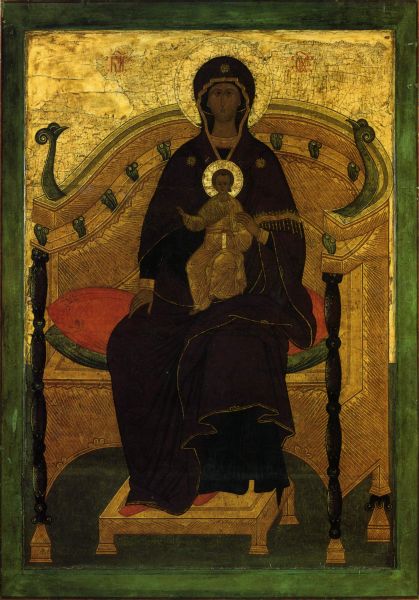|
|
The Mother of God Enthroned. First half of the 16th century

Tempera on wood
127,2 x 88,6 x 3,2
Annotation
Received in 1934 from the State Museum Fund
The first images of the Mother of God Enthroned were created in the sixth century. The earliest example is a sixth-century fresco at the Monastery of St Apollo in Bawit (Egypt, 6th–7th centuries). On this Egyptian fresco, the Virgin Mary is holding in front of herself an oval medallion with the im¬age of Christ Emmanuel, seated on the throne and giving a blessing. Later, this type of image could be found in Byzantine altar paintings of the 11th-12th century and in icon painting. In Byzantine iconography, the icon type of The Mother of God Enthroned, with Mary dressed in a cherry maphory and a dark chiton, became known as the Panachranta (from Greek, "immaculate"). Images of the Mother of God enthroned became popular in Russia in the sixteenth century as the central icon in the prophet tier of the iconostasis. The Virgin sits on a throne in an austere en face pose and the Child sits on her knees. The throne fills almost the entire surface of the icon, with the exception of the narrow green margins. Mary is dressed in a dark cherry-coloured veil and a dark-blue cap. Stars of Bethlehem, symbols of purity, are on her head and shoulders. Jesus wears a bright-yellow chiton speckled with golden assist. He blesses with His right hand and holds a rolled-up scroll in His left hand. The Mother of God is holding Him with one hand behind His shoulder, and the other calmly resting on her knee. The iconography of the Mother of God Enthroned has survived virtually unchanged. The warm ochre-brown and gold tones of the icon are particularly refined. The smooth and rounded lines of the throne, two figures and the subtly drawn faces full of inner harmony allow us to attribute this icon to the Moscow School.

